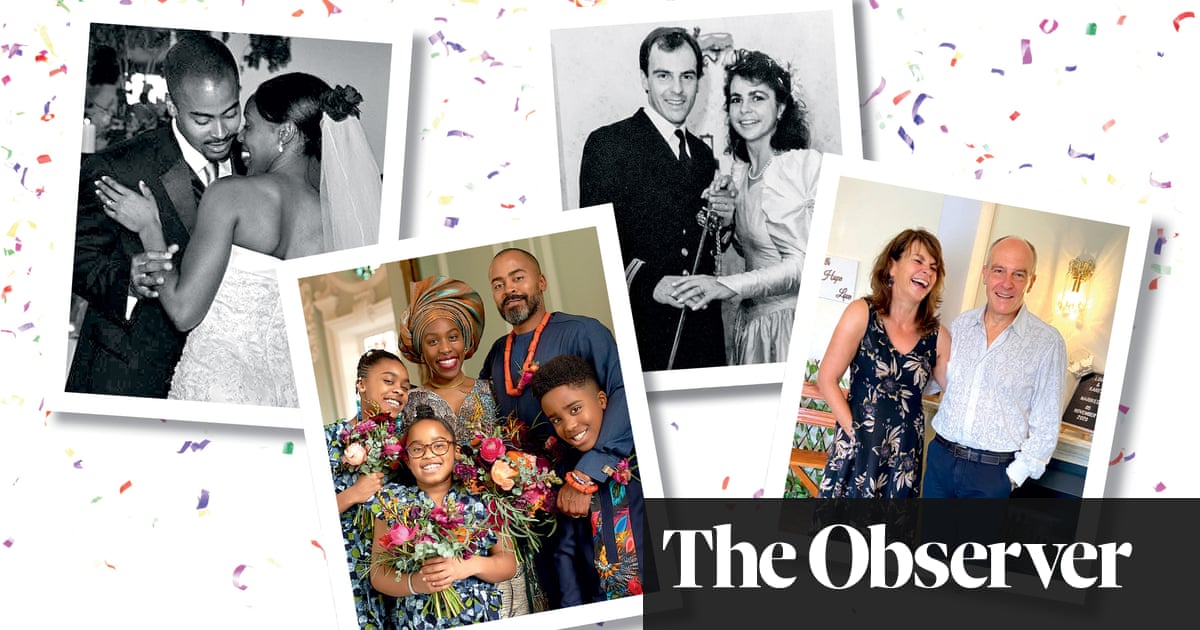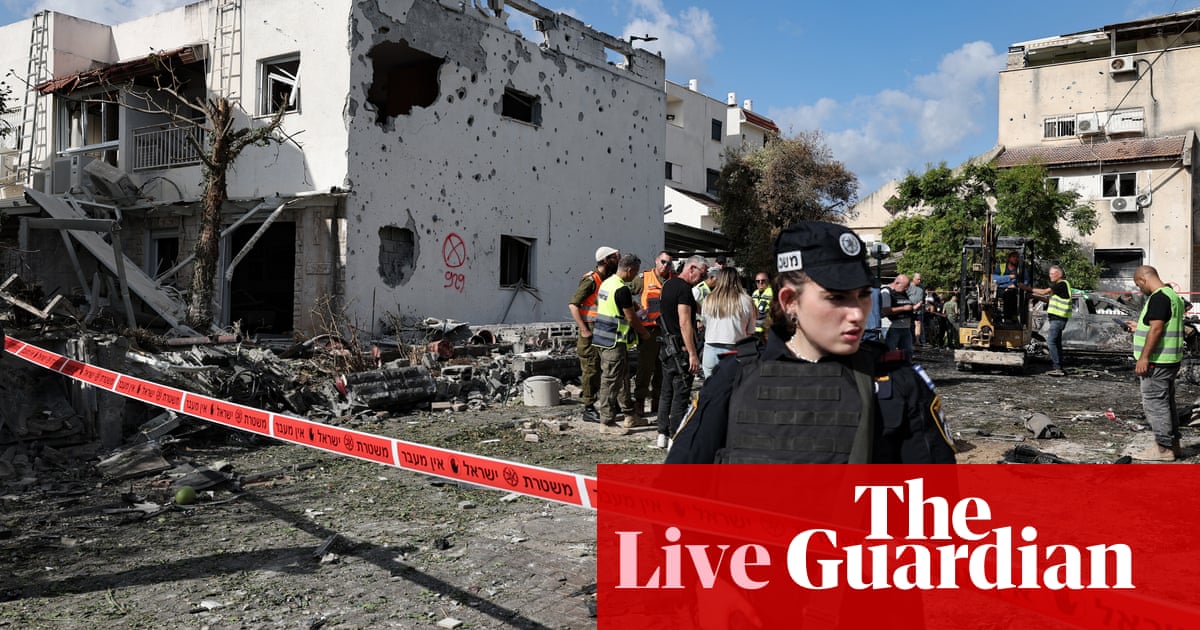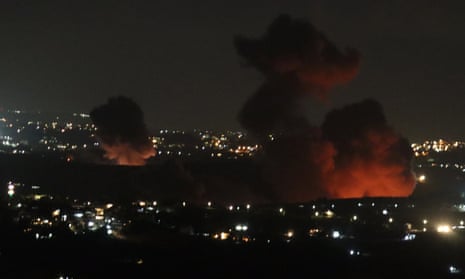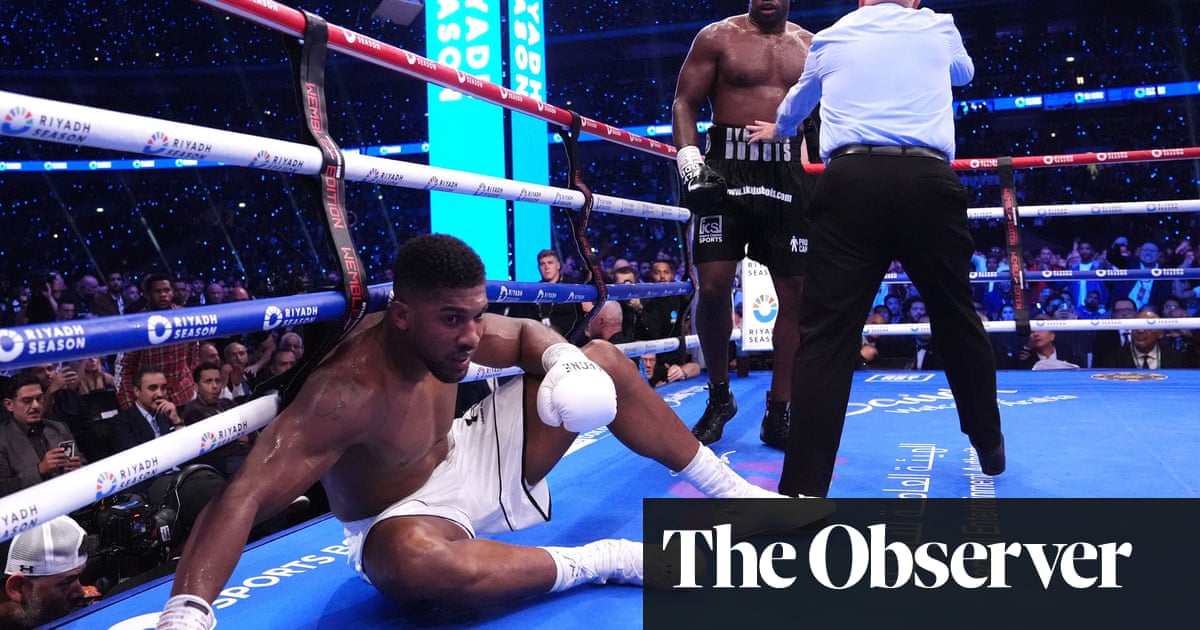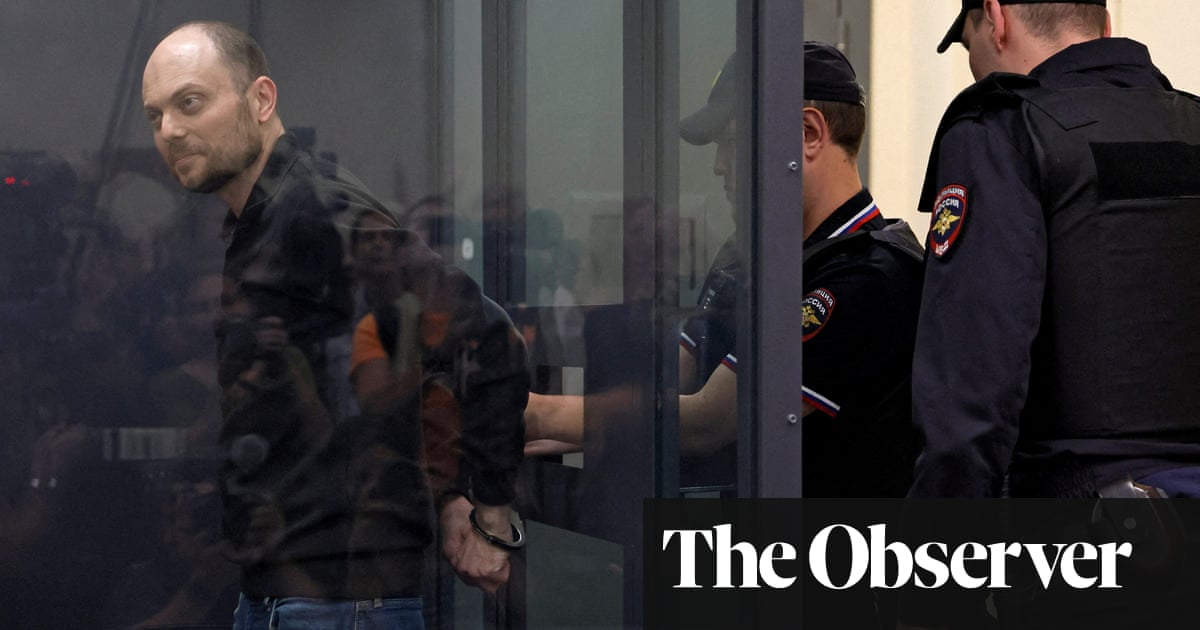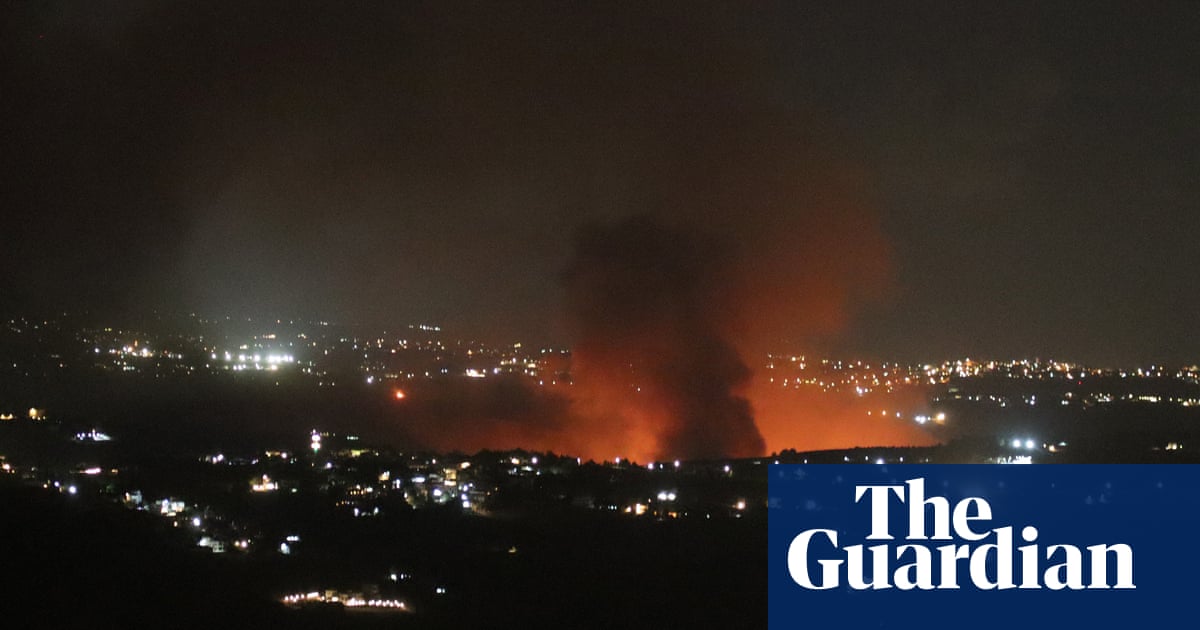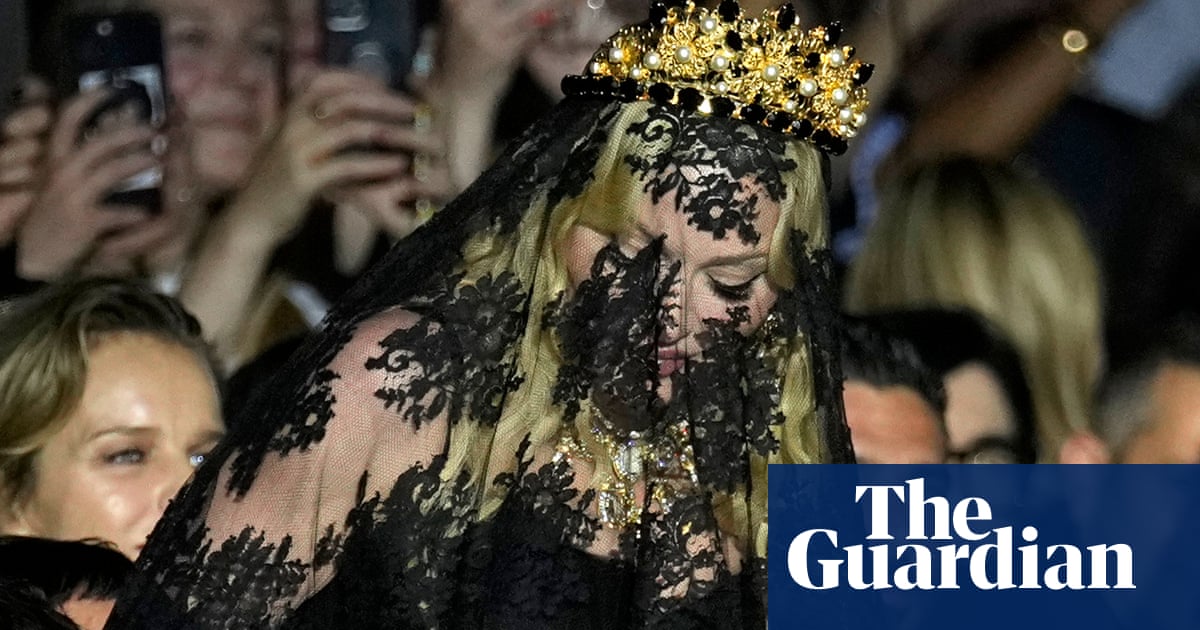Society tells us that love stories should be linear, that marriage is until death us do part. Weâve learned, though, that things are often a little more complicated. The average adult may have five relationships and fall in love with three people (bad news for two of the five, then). Divorce has recently neared the 50% rate in the UK, a percentage that is now falling, mostly because fewer can afford it. Despite these statistics, we are still fed the idea that the ultimate goal is to find âthe oneâ. Is it any wonder then, that divorce is often viewed as a failure?
We see the âsuccess storiesâ of life in long love and we wince at messy divorces â what we see less is the grey area in between. A large number of couples separate and then reunify, and a surprising amount also divorce and then remarry. The term âdivorce regretâ has been circulating recently after golfer Rory McIlroy called his marriage off and then back on. There are the notable couples who married, then did it all over again; Frida Kahlo and Diego Rivera, Elizabeth Taylor and Richard Burton. Elon Musk and his ex, British actor Talulah Riley, walked down the aisle twice, too.
Thereâs also Ben Affleck and Jennifer Lopez, who were engaged in 2002, separated for nearly two decades, then finally married in June 2022, 20 years after their initial engagement. This August, after two years of marriage, they divorced.
Yet the drama of the double wedding is not only for the rich and famous. Divorce followed by reunification is relatively common, with between 10 and 15% of couples reconciling after they separate and about 6% of couples marrying each other once again. One in 10 people who divorce say they regret it at some point. On Mumsnet, a user shares that she is thinking about divorcing her husband but is terrified sheâll regret it. Many share their own regret in response (except one, who writes: âRegret yeah⦠Regret not doing it 10 years earlier.â)
The couples remarrying after divorce offer the idea that it is possible to come through pain, anger and mourning to reach another outcome. Take Karen and Louis Beardsworth, who met in their early 20s, had been married for more than 20 years and had two daughters by the time they divorced in 2015. After five years apart and a lot of therapy, they walked down the aisle for a second time.
âAt the first wedding we had about 40 guests, at a register office in the town I grew up in. I wore a three-quarter-length cream dress,â remembers Karen. âThe second time around we married in South Africa with no one there except us. The venue was a bit strange â like one of those chapels in Las Vegas. We got the giggles because they had all these soppy, romantic placards up on the walls.â
Their laughter may have acknowledged the irony that this was âtake twoâ, but could there be something even more romantic about that fact? For their second wedding, they chose the same date as the first time around. âWe thought it would be easier to remember the anniversary,â says Karen, smiling, but there was also a kind of poetry to choosing the same day, she adds, like things had come full circle. âAfter time apart, it felt as if we were marrying more as the people we actually are, rather than the people we thought we should be,â says Louis.
If 42% of marriages end in divorce, there is the question of why we do it to begin with, beyond the legal benefits and tax breaks. As a sex and relationships therapist with the charity Relate, Ammanda Major has spent much of her career working with relationship struggles, helping people find a way out, or through. âWe get married because, mostly, it feels like the right thing to do, whether thatâs due to romantic, cultural, idealised thinking or just seeking evidence of that attachment that so many of us seek,â she reflects. âHope reigns eternal that our partner will love us always. As human beings that is a seriously compelling reason to get hitched.â The majority of people getting married believe itâs for keeps. âThatâs because by then weâve already become fully invested in the person we are marrying and hopefully them with us.â
The problems, says Major, often arise when the person we are marrying, or the marriage itself, does not meet our expectations. âSometimes expectations of being married are so high they canât possibly be met and so disappointment and resentment soon make themselves apparent, which then negatively impacts on the ability to work on problems effectively together.â
This was the case for Karen and Louis: âGetting married should be about two people, but it turns into a theatre â and then there are expectations that come with that,â says Louis. The marriage broke down after Louis, working as a pilot and travelling a great deal, had an affair. âI was emotionally dysfunctional, under a lot of pressure and compartmentalising my family to have relationships outside my marriage. It was a toxic cocktail,â he admits now. When she found out, Karen decided to divorce Louis, in part to send a signal to her daughters that she â and all women â deserved better.
Yet, when a marriage buckles under the weight of expectation, the script of how things should be, regret is a natural response, says Major. âPeople quite often have regrets about separation or experience a sense of failure, shame, sadness, a lot of âif onlyâ,â she says. âWe can regret a situation even though we knew it was the right one.â Regret isnât always a bad thing, she adds. It can prompt an opportunity to look at how our needs might have changed, what could be new in our lives, or give us clarity about the past. âThe challenge is sorting through these complex emotions and questions to understand whether to close a door or attempt to ease it open once more.â
When Major began her work, therapy was not as prevalent as it is today. The popular US TV show Couples Therapy airs couplesâ problems â literally â as does celebrity relationship therapist Esther Perel on her hugely popular podcast. Then thereâs the burgeoning industry of self-help gurus promising to help individuals rekindle with their ex (at a price). As well as the financial cost of divorce, according to Major, the rising awareness and uptake in therapy may be contributing to a fall in divorce rates.

For Karen and Louis, who accessed therapy together and then separately, talking things through with an independent party saved the relationship. In therapy, Karen established she needed independence and space to think about what she really wanted her future to look like. Louis, meanwhile, embarked on 18 months of psychotherapy. âI learned that I was not a happy person, for a bunch of reasons.â As someone raised in a very conventional background, with emotionally distant parents, Louis says he was inhibited about discussing his feelings in a way that was bad for relationships. In therapy, Karen and Louis had revelations about who they were as people, both separately and together.
In her book, Mating in Captivity: Reconciling the Erotic and the Domestic, Perel suggests that âlove rests on two pillars: surrender and autonomyâ. The cliché of âus against the worldâ may not always serve us. Growing as individuals is just as important as growing as a couple, while distance â both physical and psychological â can foster attraction to our partner when it is waning. Perel has also built her multimillion-dollar business, and credibility, by addressing the thorny issue of expectations versus reality. âToday, we turn to one person to provide what an entire village once did: a sense of grounding, meaning, and continuity,â she writes. âAt the same time, we expect our committed relationships to be romantic as well as emotionally and sexually fulfilling. Is it any wonder that so many relationships crumble under the weight of it all?â
Perelâs quote resonates with Ebele, who married, divorced and then remarried her lifelong love, Rich. The couple met at a summer camp in the US as teenagers in the early 90s, and started dating. However, because Rich was younger, they decided to remain friends. When the millennium was approaching, Rich started sending gifts to Ebele, who was by then living in London. The coy courtship worked; one night, they unexpectedly slept together, moving in together that same week, and marrying just two years later. âWe agreed on what marriage meant to us: not gazing into one anotherâs eyes all the time, but wanting our lives to be a shared adventure.â
The couple honoured these intentions as best they could; they lived separately for periods and travelled extensively before having children. Yet, starting a family complicated things: âHaving kids is a joy, a blessing and a privilege, but itâs also really hard, especially the way itâs done in the west, where youâre not so much in communities with parents and aunts and uncles around.â Ebele remembers how, after she had each kid, their sex life would shut down for a time. In 2020, after 16 years as husband and wife, she felt that she and Rich had become more like friends. Their divorce was amicable. âWe had a better divorce than most marriages, we lived in walking distance, were dating other people and coparenting smoothly.â
Ebele jokes that there is a âchaos phaseâ after divorce, something like a second youth. Then, you reach a point where you can sit with your feelings for long enough to understand them. Two realisations hit her. âA friend who is an artist said that if you have a creative gift and donât use it or suppress it, it can eat you up inside. I remember thinking, âThis is Rich, he was an artist, but he was always trying to do the adult thing, he wasnât fully himself.ââ Ebele was also able to recognise that the grief of her brotherâs death in a racially motivated police shooting in 2018 had impacted the marriage. âAnother friend said one thing that happens in grief is creating distance from the person youâre most scared of losing. No one had ever said that to me. There was a way I felt at the end of the marriage, like Iâm not fighting for this, which I now recognise was about me creating distance.â Distance allowed Ebele and Rich the perspective to see that they were better off together, life had just come in the way.
Throughout the process of separation, and also reunification, Ebele noticed that, while marriage can feel insular, the people in your life always have opinions on it. Friendsâ feelings were mixed. âWhen we divorced, people took it badly, they were devastated, said, âBut you guys are like Black love incarnate.â When we told them we were getting together again there was joy, some said, âYou owe us a partyâ and others said, âEverything about this is very you guys: slightly off,â she laughs. Karen experienced a stronger sense of judgment. âI lost two good long-term girlfriends, because I got back together with Louis. They were very judgmental. They felt I hadnât taken their advice.â
Judgment from others piles on top of the judgments we place on ourselves when it comes to marriage and divorce. Stay together for the kids, try harder, donât walk away. Fear of being alone also leaves people trapped in relationships, says Major, and can spur a sense of regret if we do leave. âBut no matter the situation, the first bit of the problem-solving is what may have gone wrong,â the therapist explains. âPeople fantasise about what life would be like if they got back together again, but without understanding what didnât work, people may find they go back into those relationships and the same problems emerge.â Bar a situation of domestic violence or abuse, where there is one person responsible, she says, usually we each have a part to play in relationship dissatisfaction.
For those experiencing divorce regret, Major offers advice on how to sort out what is missing someone, loneliness, or a genuine mistake. She believes self-reflection and, if possible, therapy can be instrumental in finding answers to these questions. âWeâre social human beings â we seek connection and to be left or abandoned can have a profound toll on some peopleâs mental health or wellbeing.â Sitting with that, letting it settle, and also rebuilding self-worth can help people have a happy relationship going forward, she says, whoever it might be with.
While for many cheating is the final straw, for Karen, understanding the weight of expectation that marriage can bring helped her see things differently. âWe label people who have affairs as terrible, but itâs an extraordinary thing to be expected to spend your life with one person. I think what Iâve learned is that people need to be honest and open about where they are at, because you look at people who are unhappy in their relationships and you think: why arenât you changing anything?â For younger generations, she adds, there seems to be more openness and also equality. âSociety has changed so much. Women are far more likely to think of themselves first and more hesitant to jump into relationships because that is what they are âsupposedâ to do.â
Things are indeed changing, albeit slowly, agrees Major. At Relate, she and other therapists have adopted the term âmulti-partner relationship therapyâ to encompass the many constellations relationships can take. âPeople choose to live their lives now unmarried or with more than one partner, so itâs important to have a narrative that reflects how we live.â
At the Labour party conference last October Emily Thornberry committed to reforming the law on cohabiting couples to provide better protection (the outcome remains to be seen). Recently the law around divorce changed, too, points out lawyer David Allison. Since April 2023, couples can file for âno-faultâ divorce, stating that their marriage simply broke down. âThat has really changed things,â he comments, âbecause the requirement to state fault stirred up anger and resentment, resulting in a blame game.â
The change in law may provide yet another reason why couples are getting back together. Allison is familiar with the concept of divorce regret. Over his two-decades-long career, he has seen countless couples reunite. âItâs not uncommon for our clients to get back together, which is surprising when theyâve been slugging things out in court,â he explains. âBut I suppose sometimes the cause of unhappiness in a relationship goes away precisely because of the divorce.â He gives an example: a female client who had felt she lacked financial independence in her marriage. âThey divorced, reached a settlement, and then she started seeing her ex-husband again.â Similarly, he has seen people move in on their own and start dating their ex, enjoying a sense of novelty of this arrangement. Love is space, as the saying goes.
Karen and Louis lived apart for a while before moving back in together. âIt took a long time to rebuild trust and prove I wasnât the person I used to be,â says Louis, who brought up the idea to remarry: âI wanted it for a number of reasons, but mostly because it is a very clear commitment.â Now, happily married again since 2020, the couple say their kids like to tease them: âSo which anniversary is this, your 36th or your 4th?â But what have they ultimately learned from loving â and then loving one another again? Itâs that you must love yourself before you can love someone else. âI look at friends who have gone through divorce and are on their second and third marriages, but if you donât reflect on yourself, you may end up confronting the same issues with someone else,â says Karen. âPersonally, I needed to grow up and work out what I wanted rather than being the wife and the mother of the children. I was forced into that situation, which was actually great.â
Ebele and Karen look back on their separation as a positive thing. As well as an opportunity to establish independence, Ebele believes her marriage is different the second time around: âThereâs more room for experimentation, for us figuring out even further what we want out of marriage, it feels even more like adventure. The first time we thought it was forever, but now it really does feel that way⦠Especially as no one has any patience for us to do this again.â
